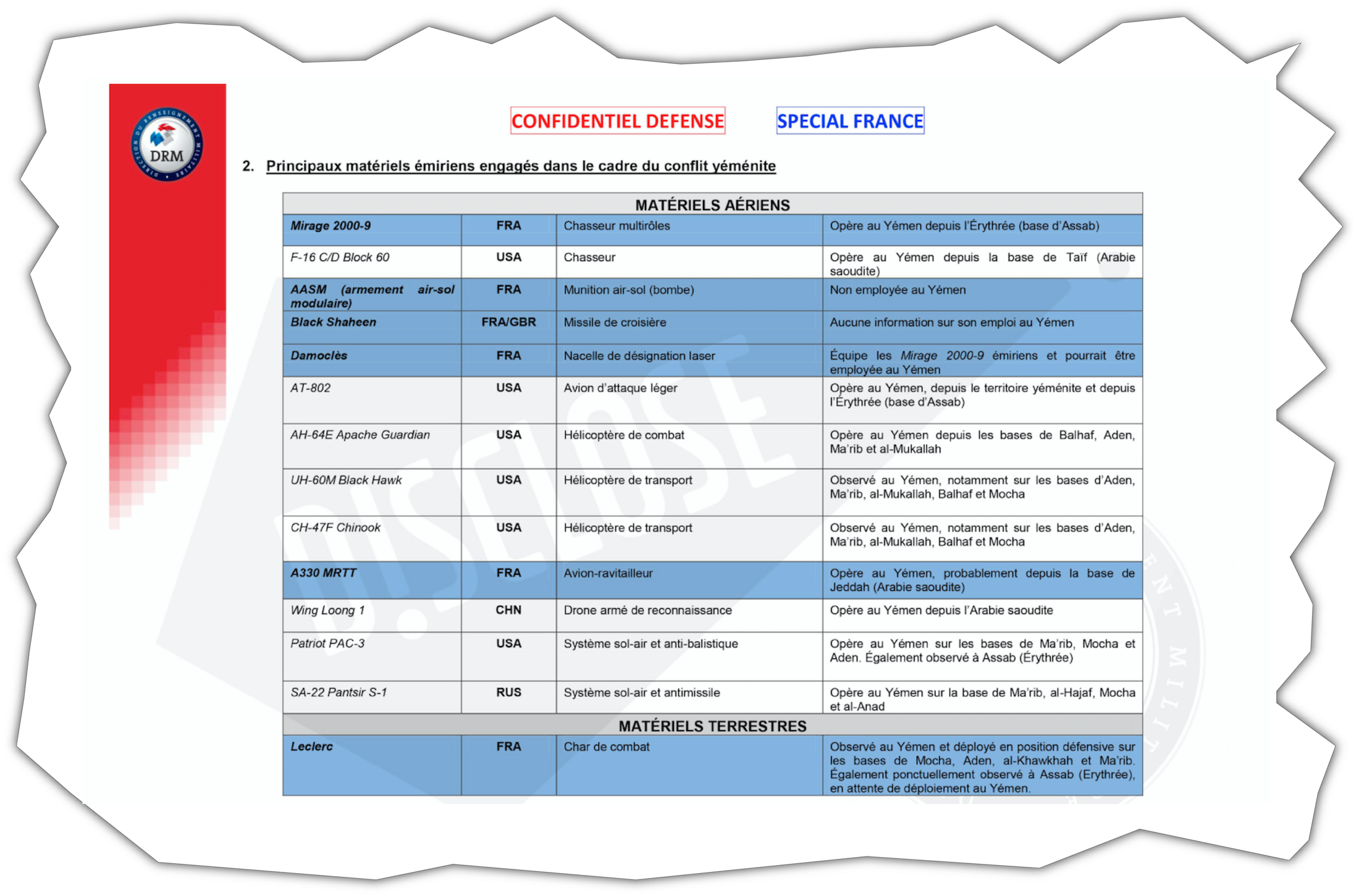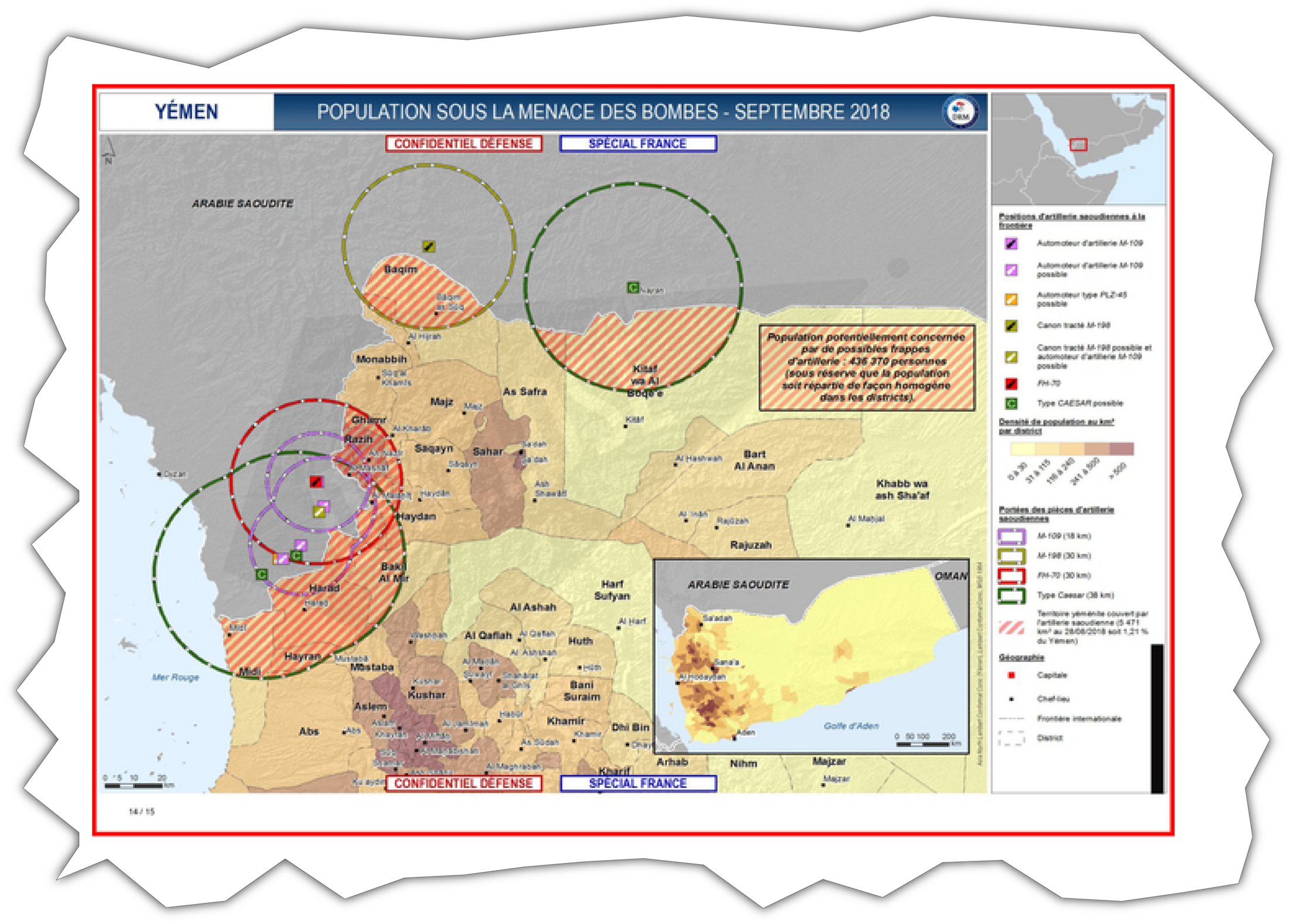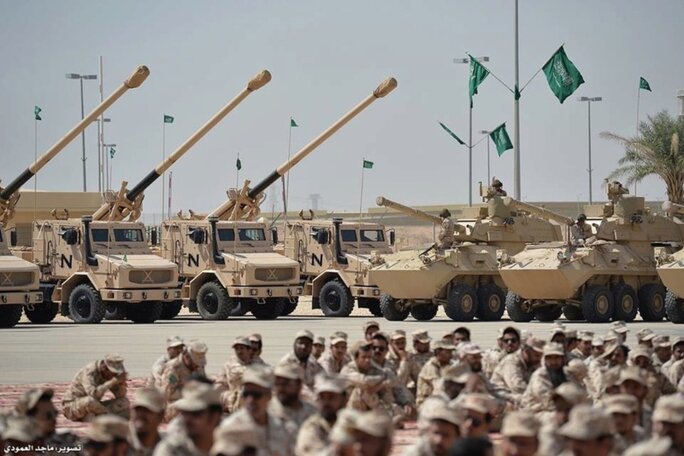Two journalists from the online French reporters’ collective Disclose, a site dedicated to investigative journalism which revealed, in reports co-published with Mediapart, the massive use of French-made weapons in the devastating war in Yemen, have been summoned for questioning later this month by France’s internal intelligence agency, the DGSI, over an alleged violation of national security interests.
A third journalist, Benoît Collombat, from the investigative reports team at state broadcaster Radio France, and who was associated with the Disclose report, has also been summoned for questioning by the DGSI (Direction générale de la sécurité intérieure).
The revelations by Disclose demonstrated that French ministers had misled the public over the deployment of French-made arms in the Yemen conflict by claiming that the weapons, sold to Saudi Arabia and the United Arab Emirates (UAE), were not involved in frontline combat in the war which has caused what the United Nations (UN) has described as “one of the worst humanitarian crises in the world”.
Disclose cited a confidential September 2018 report by France’s military intelligence agency, the DRM, which detailed the offensive role of the weapons and which, Disclose reported (see here, here and here), was handed to the French presidency, prime minister’s office and relevant ministries.
The three journalists have each been informed in the summons they received from the DGSI that they are suspected of involvement in “compromising national defence secrecy”. The move by the intelligence agency is as part of an investigation opened by the Paris prosecution services following a complaint lodged with it by the French defence ministry.
The two journalists from Disclose, Geoffrey Livolsi and Mathias Destal, were warned in the summons that the offences they are suspected of committing are punishable by “a prison term”. Under French law, they face a possible five-year jail sentence and a fine of up to 75,000 euros.
“This [legal] procedure has no other objective than to attempt to discover our sources,” said Livolsi. “It is thus a violation of the freedom of the press which allows for the protection of sources. The executive has therefore chosen to respond to our revelations with a legal threat.”
Mediapart has learned that the investigation by the Paris prosecution services was opened on December 13th 2018 – four months before the reports by Disclose were published.

Enlargement : Illustration 1

The alleged offence of the three journalists in reality amounts to nothing other than exercising their professional duties by revealing, in reports co-published by Mediapart and other media organisations, how the contents of the DRM report clearly contradict official French government statements about the deployment of the French-made weapons by Saudi Arabia and the UAE in their now four-year military campaign in Yemen. The Saudi-led Arab coalition offensive was launched in March 2015 in support of Yemen’s ruling regime following an armed rebellion against it by Houthi forces, a movement from the country’s Shia Muslim minority.
As well as the French-made arms, the arsenal employed by the Saudi-led coalition also includes a significant number of weapons sold by the United States, Britain and Germany.
The coalition’s attacks by air, land and sea have largely contributed to the deaths to date of more than 8,000 civilians, the onset of famine amid acute food shortages for millions of others, the displacement of an estimated three million people, and the outbreak of a vast cholera epidemic.
It is within this context that the details of the confidential 15-page DRM report, dated September 25th 2018, are of clear public interest. It reveals clearly, with data and maps, how the French-made weapons are actively deployed in the coalition campaign, despite repeated official statements by the French government that they serve only to defend Saudi Arabia from cross-border attack. Disclose also reported that French foreign affairs minister Jean-Yves Le Drian misled a parliamentary committee by claiming France had not supplied arms to the Saudi air force, which plays a key role in the bombing campaigns.
According to the DRM report cited by Disclose, the French-made weapons are part of an arsenal employed by the coalition in the air, at sea and on land. It details that 48 CAESER truck-mounted howitzers, formidable artillery pieces sold to Saudi Arabia by France’s state-owned defence company Nexter, are positioned along the Saud Arabian border with Yemen in order, it notes, to “back up loyalist troops and Saudi armed forces in their progression into Yemeni territory”. In its report, Disclose noted that the CAESER units – guns mounted on an all-wheel-drive truck chassis – can fire six shells per minute onto a target up to 42 kilometres away.
The DRM document contained a map entitled “Population under threat of bombs” which pinpoints the positions of the CAESAR guns within range of three different zones in Yemen in which are located towns, villages, and farms. “The population concerned by potential artillery fire: 436,370 people,” it concluded.

Enlargement : Illustration 2

The DRM document also confirmed that French-made warships are used in the Saudi and Emirati maritime blockade in the Red Sea, an operation which is hampering the supply of vital goods for the needy Yemeni civilian population. At least one of the warships, the military intelligence report noted, is deployed “in support of terrestrial operations led on Yemeni territory”.
The revelations by Disclose, providing irrefutable evidence of how the French government had misled public opinion, also included data, cross-checked against information from NGOs monitoring the conflict in Yemen, which detailed the tolls of deaths, woundings and destruction of civilian installations caused by coalition attacks. When it co-published the reports by Disclose on April 15th, Mediapart underlined: “The documents revealed by Disclose include those classified in France as official defence secrets. If we detail them here it is because they are of public interest. They demonstrate how the French government has concealed its part of responsibility in a war which, since 2015, has caused the deaths of thousands of civilians.”
“The publication of these documents represents no danger to French army personnel nor its missions. The subject here is the use of weapons made and sold by France to other countries.”

Enlargement : Illustration 3

Contacted by Mediapart after the journalists from Disclose and Radio France were issued with the summons to appear before the DGSI, a senior official in the French interior ministry (speaking on condition his name was withheld), said he would not comment on the official investigation, but added: “Legally, no-one, I believe, can contest that a secret [state] defence document has been consulted and published by a person who is not authorised to do so.”
Mediapart reiterates here its full support for the journalists, who are the victims of what is yet a further attempt to criminalise journalism, in disrespect of the legal protection of the freedom of the press in France as set out by a landmark law of July 29th 1881. The move against them has the one aim of discouraging the sources of journalists whose reports can inconvenience the authorities.
In a joint statement, Disclose and its media partners involved in relaying its investigations – Mediapart, the French-German public TV channel Arte, Radio France and Konbini News – underlined the “major public interest” of the revelations. “It is that of bringing to the knowledge of citizens and their representatives what the government had wanted to conceal, namely information which is indispensable for a balanced debate about the arms contracts which link France with countries accused of war crimes,” read the statement, which concluded: “To the question, ‘Do the French people have the right to be informed about the use that is made of weapons sold to countries accused of war crimes?’, the government has chosen to respond with threats.”
Following the publication of the reports by Disclose and on the initiative of several Members of Parliament, French defence minister Florence Parly has been called to appear on May 7th for questioning over the revelations by the defence committee of the lower house, the National Assembly. Meanwhile, ten non-governmental organisations, including Human Rights Watch, Amnesty International and the International Federation for Human Rights (FIDH), issued a joint appeal calling for an immediate halt to the supply of French armaments to Saudi Arabia and the UAE.
The French law protecting the secrecy of confidential defence documents – those officially considered as containing information that requires secrecy in the national interest, categorised as “Secret défense” – has previously been used against Mediapart for publishing information of public interest. In March 2016, Mediapart published an article by its contributing reporter on African affairs, Clément Fayol, which revealed a document from France’s inter-ministerial defence body, the Secrétariat Général de la Défense Nationale (SGDN), which revealed France's complicity, in a geopolitical strategy, with the regime of Chadian dictator Idriss Déby.
Subsequently, Fayol and Mediapart's publishing editor, Edwy Plenel, were questioned separately by the DGSI internal intelligence agency for allegedly “compromising national defence secrets”. The case against Clément Fayol was finally closed on October 2nd 2018, with an official warning issued to him by the then head of the Paris prosecution services, François Molins.
In the document detailing the conclusion of the investigation, Molins (who is now chief prosecutor at France's highest appeal court, the Cour de Cassation), warned Fayol that if he was considered to have re-offended against the “Secret défense” regulations over the course of the following six years he would be sent for trial before a criminal court.
-------------------------
- The French version of this article can be found here.
English version by Graham Tearse and Michael Streeter


